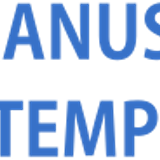Optimization of Process Design and Operating Parameters of H2S Removal Unit to Reduce Lean Amine Inlet Temperature of Amine Contactor at Upstream Oil and Gas Subsidiary SI
Abstract
Keywords
Full Text:
PDFReferences
Abdel-Aal, H.K., 2003, Petroleum Engineering. National Research Center Egypt.
Adikharisma, R., 2014,Analisis Kinerja Proses CO2 Removal pada Kolom Absorber di Pabrik Amoniak Unit 1 PT. Petrokimia Gresik. Institut Teknologi Sepuluh Nopember.
Alexander, M.n.t., Neraca Massa dan Neraca Energi Pengelolaan Sampah Terpadu - Penujah Kabupaten Tegal. Jurnal Ilmiah TEKNOBIZ, 8(3), 129–138. doi: 10.35814/teknobiz.v8i3.894.
Aulia, H.N., 2022, Simulasi Aspen HYSYS pada Kolom Absorbsi Gas CO2 dengan Solven Metildietanolamine (MDEA). Jurnal Teknologi Technoscientia, 14(2), 85–90. doi: 10.34151/ technoscientia.v14i2.3579.
Aziz, P.A., Rachmat, M., Chandra, S., Daton, W. N. & Tony, B., 2023, Techno-Economic Solution for Extending CCUS Application in Natural Gas Fields: A Case Study of B Gas Field in Indonesia. Scientific Contributions Oil and Gas, 46(1), 19-28. doi: 10.29017/SCOG.46.1.1321.
Christie, J. & Geankoplis., 1983, Transport Process and Unit Operation. PTR Prentice- Hall Inc, Englewood Cliffs, New Jersey.
Edgar, T.F., Himmelblau, D.M. & Lasdon, L. S., 2001, Optimization of Chemical Processes (2nd ed.). McGraw-Hill.
Fatimura, M., Fitriyanti, R. & Masriatini, R., 2018, Penanganan Gas Asam (Sour Gas) yang Terkandung dalam Gas Alam Menjadi Sweetening Gas. Jurnal Redoks, 3(2), 55–67. doi: 10.31851/ redoks.v3i2.2390.
Fuqoha, I., 2012, Perancangan dan Estimasi Biaya Unit Pemisahan Gas Asam dengan Kandungan CO2 dan H2S Tinggi. Universitas Indonesia.
Giffari, F., Widiastuti, P., Rosmayati, L., Nofrizal & Kusdiana, D., 2021, A New Approach for East Natuna Gas Utilization. Scientific Contributions Oil and Gas, 44(3), 215-221. doi: 10.29017/ SCOG.44.3.713.
Halimah, M.R., Nasrulza, Azhari, Meriatna & Sulhatun., 2024, Optimasi Penggunaan Solven MDEA (Metildietanolamine) pada Absorpsi Gas CO2 dengan Simulasi Aspen HYSYS V.11. Chemical Engineering Journal Storage, 4(3), 325-337. doi: 10.29103/cejs.v4i3.14893.
Jones, D., S., J., 2016, Handbook of Petroleum Processing.
Kurniawan, D., H., 2024, Redesain Electric Submersible Pump (Esp) pada Sumur yang Mengandung Gas “W- 30” Lapangan “A”. Lembaran Publikasi Minyak dan Gas Bumi, 58(1), 1-11. doi: 10.29017/LPMGB.58.1.1610.
Mahfud, M. & Sabara, Z., 2018, Industri Kimia Indonesia (1st ed.). Deepublish.
McCabe, W.L, Smith, J.C. & Peter, H., 1993, Unit Operations of Chemical Engineering Fifth Edition (5th ed.). McGraw-Hill Book Company.
Michael, S., 2021, Analisis Gas Sweetening untuk Menghilangkan Gas H2S dan CO2 dari Produksi Gas yang Akan Dipasarkan Menggunakan Metode Numerik. Universitas Islam Riau.
Kementerian Pendidikan dan Kebudayaan Republik Indonesia. 2015. Gas Processing. Kementerian Pendidikan dan Kebudayaan Republik Indonesia.
Mujiyanti, S.F., 2018, Desain Plantwide Control pada Gas Processing Facility (GPF) Plant. Institut teknologi Sepuluh November.
Rahmatika, F.A., Ariq, Y.N., Susianto & Taufany, F., 2019, Pra-Desain Pabrik LPG dari Gas Alam. Jurnal Teknik ITS, 8(2), 46–51. doi: 10.12962/ j23373539.v8i2.43597.
Smith, J.M., Ness H.C.V. & Abbott, M.M., 2005, Introduction to Chemical Engineering Thermodynamics Seventh Edition (7th ed.). McGraw-Hill Book Company.
Sopurta, A., Siregar, P.I. & Ekawati, E., 2014, Perancangan Sistem Simulasi HYSYS & Integrasi dengan Programmable Logic Controller-Human Machine Interface: Studi Kasus pada Plant Kolom Distilasi Etanol-Air. Jurnal Otomasi Kontrol Dan Instrumentasi, 6(1), 1. doi: 10.5614/joki.2014.6.1.1.
Sugihardjo, 2022, CCUS-Aksi Mitigasi Gas Rumah Kaca dan Peningkatan Pengurasan Minyak CO2-EOR. Lembaran Publikasi Minyak dan Gas Bumi, 56(1), 21-35. doi: 10.29017/LPMGB.56.1.916.
Wuryanti, S., 2016, Neraca Massa dan Energi. Politeknik Negeri Bandung.
Yaws, C.L., 1999, Chemical Properties Handbook. McGraw-Hill Companies.
DOI: https://doi.org/10.29017/SCOG.47.3.1644

This work is licensed under a Creative Commons Attribution-NonCommercial-NoDerivatives 4.0 International License.






